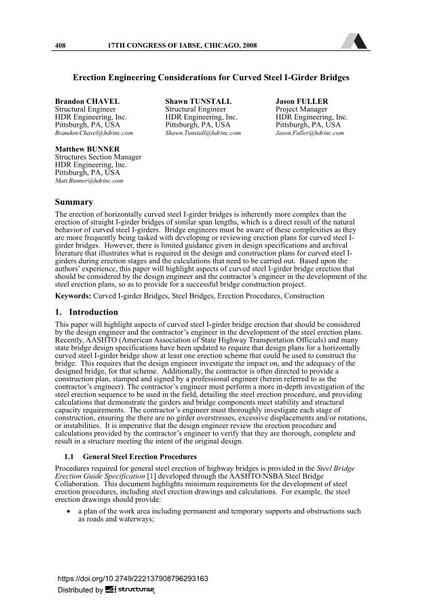Erection Engineering Considerations for Curved Steel I-Girder Bridges

|
|
|||||||||||
Détails bibliographiques
| Auteur(s): |
Brandon Chavel
Shawn Tunstall Jason Fuller Matt Bunner |
||||
|---|---|---|---|---|---|
| Médium: | papier de conférence | ||||
| Langue(s): | anglais | ||||
| Conférence: | 17th IABSE Congress: Creating and Renewing Urban Structures – Tall Buildings, Bridges and Infrastructure, Chicago, USA, 17-19 September 2008 | ||||
| Publié dans: | IABSE Congress Chicago 2008 | ||||
|
|||||
| Page(s): | 408-409 | ||||
| Nombre total de pages (du PDF): | 8 | ||||
| Année: | 2008 | ||||
| DOI: | 10.2749/222137908796293163 | ||||
| Abstrait: |
The erection of horizontally curved steel I-girder bridges is inherently more complex than the erection of straight I-girder bridges of similar span lengths, which is a direct result of the natural behavior of curved steel I-girders. Bridge engineers must be aware of these complexities as they are more frequently being tasked with developing or reviewing erection plans for curved steel I- girder bridges. However, there is limited guidance given in design specifications and archival literature that illustrates what is required in the design and construction plans for curved steel I- girders during erection stages and the calculations that need to be carried out. Based upon the authors’ experience, this paper will highlight aspects of curved steel I-girder bridge erection that should be considered by the design engineer and the contractor’s engineer in the development of the steel erection plans, so as to provide for a successful bridge construction project. |
||||
| Mots-clé: |
ponts en acier
|
||||
